![]()
![]()
![]()
Use LEFT and RIGHT arrow keys to navigate between flashcards;
Use UP and DOWN arrow keys to flip the card;
H to show hint;
A reads text to speech;
24 Cards in this Set
- Front
- Back
|
3 Strategies For Genetic Improvement (to exploit genetic variation)
|
(1) Selection among breeds
(2) Crossbreeding (3) Selection within breeds |
|
|
Selection Among Breeds (or populations)
|
Straightbred (aka purebred) animals are preferred when a particular breed is markedly superior in the relevant environment (Holstein-Fresians for milk prod'n)
Straightbreds will also be bred for crossbreeding programs |
|
|
Breed Comparisons (3 criteria)
|
(1) Breeds should be compared in the SAME, RELEVANT ENVIRONMENTS. (There is little value in comparing two sheep flocks of different breeds with different environments, farming regimes.)
(2) Need ADEQUATE SAMPLE SIZE (in order to detect meaningful differences) (Most breed comparisons need 10 - 20 animals, may need 100 - 200...) (3) Animals should REPRESENT ORIGINAL POPULATION/ BREED. (Little value in comparing best of one breed against average animals of other breed) |
|
|
Type 1 & Type 2 Errors
|
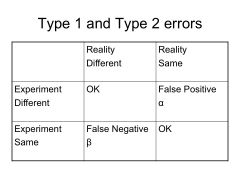
TYPE 1 ERROR: False Positives (about 5%)
TYPE 2 ERROR: False Negative, (about 20%) lots of them in Biology, hard to control. |
|
|
Breed Pyramid Structure
|

(1) NUCLEUS; (top of pyramid) Most genetic improvement is occuring in a small population.
(a) OPEN NUCLEUS; if superior animals can be transferred form lower tiers (higher risk of introducing disease), or (b) CLOSED NUCLEUS; if animals are not transferred from lower tiers. |
|
|
Crossbreeding (definition)
|
The mating of individuals from different populations (strains or breeds).
|
|
|
5 Reasons CROSSBREEDING is Useful
|
(1) When we are interested in several traits for which different breeds are superior (Complementarity)
(2) To exploit heterosis (3) When intermediate performance is optimum (4) Creating a new synthetic breed (5) Grading Up |
|
|
Crossbreeding: COMPLEMENTARITY
|
Due to additive gene action when two or more characters/traits complement one another.
|
|
|
Crossbreeding: COMPLEMENTARITY EXAMPLE (when different breeds = superior for certain traits...)
|
Australia = cattle-tick problem
Bos indicus (Brahman cattle) = heat tolerant & tick resistant Bos taurus (Angus, Hereford) = superior productivity --> Crossbred = may benefit from superior traits of both breeds (due to complementarity) |
|
|
Crossbreeding: HETEROSIS (definition)
|
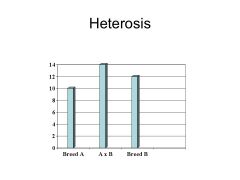
When crossbred progeny perform better than the average of the two parents for certain characters/traits. This superior performance is called HETEROSIS or HYBRID VIGOR.
Exploits interactions b/w breeds. Works best for genetically diverse breeds. "Good genes" in Breed A mask "bad genes" in breed B |
|
|
Heterosis: When heterosis is the greatest...
|
Heterosis can range up to 30%. In general, it tends to be greatest in characters/traits associated w/ (a) viability, & (b) reproductive performance... & it increases w/ genetic diversity b/w parental populations.
|
|
|
Heterosis: Genetic factors...
|
Heterosis exploits INTERACTIONS w/in and b/w loci.
Heterosis is due to NON-ADDITIVE gene action (Dominance & Epistasis) |
|
|
Heterosis: Types of Crosses (5)
|
(1) Two-way Crosses
(2) Backcross (3) Three-way Crosses (4) Four-way Crosses (5) Rotational Crosses |
|
|
Heterosis: Two-Way Crosses
|
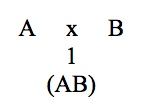
The simplest type of cross.
Example: Blueface Leicester x Swaledale --> (N. of England Mule) |
|
|
Heterosis: Backcross
|

Involves mating crossbred individuals to one of the two parental breeds.
They show 50% less heterosis than two-way crosses. Example: Many commercial pigs = backcrosses involving Large White and Landrace breeds. --> Because maternal heterosis is usually more important than paternal heterosis, the CROSSBRED PARENT IN BACKCROSS is usually FEMALE. |
|
|
Heterosis: Three-Way Crosses
|
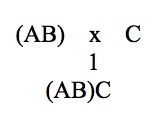
Mating of first cross animals (AB) with animals from unrelated population. The first cross progeny are usually female (because maternal heterosis is more important than paternal heterosis).
This cross enables full use of maternal heterosis and of individual heterosis. Examples: Used commonly in sheep, where A = hill breed (Scottish Blackface, Swaledale), B = longwool breed (Bluefaced Leicester), and C = terminal sire breed (Suffolk, Texel) |
|
|
Heterosis: Four-Way Crosses
|
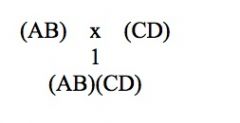
When one two-way cross is bred to another two-way cross. Enables full exploitation of paternal, maternal, and individual heterosis.
The major problem is finding four breeds of sufficient genetic merit. Example: Used in poultry breeding, but only occasionally in most domestic animal species. |
|
|
Heterosis: Rotational Crosses
|

Allows breeders to produce at least some of their own replacement stock, but they do not allow the full exploitation of complementarity.
Example: Pig & organic beef breeders. --> Rotate bull population b/w hereford & angus... calves become more consistent, relatively stable population (similar to 2-way cross over time). |
|
|
2-way cross vs. 3-way cross
|
2-way cross = involves individual heterosis;
--> Example, results in 8% increase in calf weight. 3-way cross = involves BOTH individual & maternal heterosis; --> Example, results in 23% increase in calf weight |
|
|
Comparing amount & type of heterosis displayed among breeding schemes
|
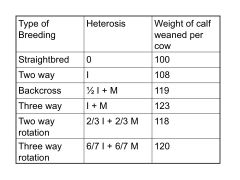
Least heterosis (0%) = straightbred
Most heterosis (123%) = 3-way cross (complete individual + maternal heterosis) |
|
|
Intermediate Optimum
|
When intermediate performance is optimal.
EXAMPLE: The use of beef x dairy dams for suckling calves born when the dams are crossed to terminal sires (charolais, limousin, simmental, hereford, angus). Because beef breed doesn't produce enough milk, and diary breed produces too much milk, therefore, dam is a desirable intermediate. |
|
|
Grading Up
|
Involves a succession of backcrosses (AB x A --> Crossbred mother crossed with straightbred), to; (1) introduce a new trait (for example, polled) into a population, (2) import a new breed or/ substitute one population for another, (3) or introduce a new gene
EXAMPLE; (2) When new breeds are imported into a country. Australia wanted to import Charolais w/out diseases from French Charolais cattle, so only imported Charolais semen until greater and greater %age Charolais. Biosecurity advantages to importing live animal. (3) As molecular geneticists begin to identify loci responsible for variation in important traits, then we may see grading up schemes to introduce favorable alleles into different populations. |
|
|
Synthetic (or Composite) Breeds
|
Creating a population consisting of genes from several different populations.
Advantage = only one population has to be maintained. (As compared to CROSSBREEDING SCHEMES which requires a constant supply of straightbred animals, can be difficult to make progress over time...selection process needs to be made within the straightbred populations.) EXAMPLE: The Norwegian Red, Belmont Red (Asian cattle crossed w/ shorthorn), Droughtmaster (bred to survive drought) = are examples of cattle breeds formed recently. |
|
|
Creating Synthetic Breed : Norway Example
|
End of WWII, Norway devastated. Got together 2 create single population of cattle. Imported semen if thought could improve Norwegian population. Farmers given limited range of bulls to breed from. Were able to eliminate bulls w/ increased incidence lameness & mastitis.
A system that has WORKED; created a synthetic cow. Advantage = one population for selection. Disadvantage = large populations are more effective. |

